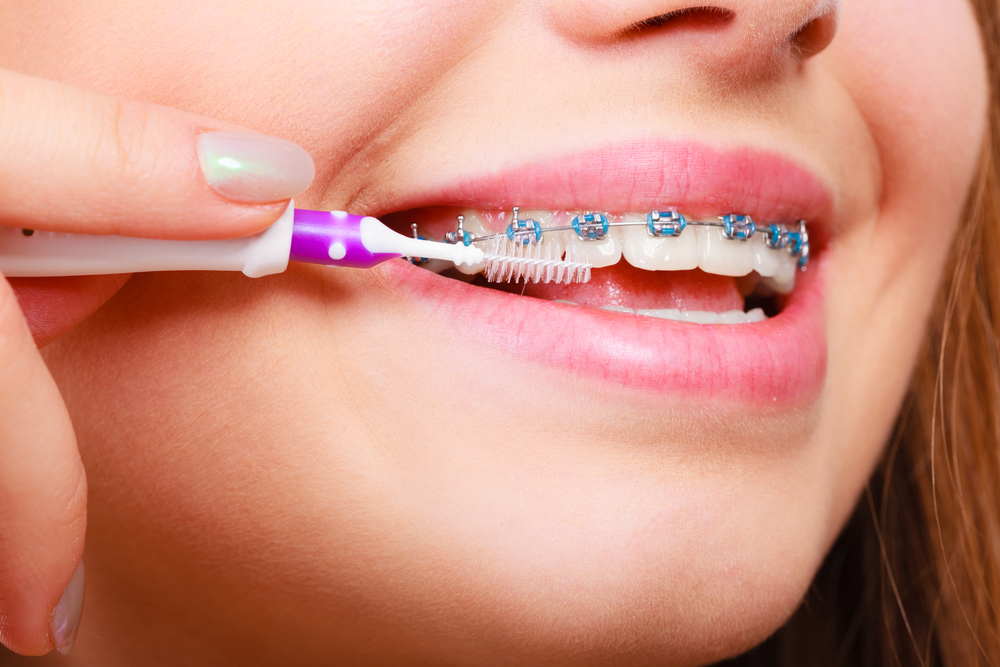
When your mouth is outfitted with brackets and wires it’s totally normal to worry that something could go wrong, especially in the beginning. However, we have to say, between our offices in Washington and Alaska, we’ve seen a ton of Juneau, Bothell, Monroe and Mill Creek braces and Invisalign patients and the overwhelming majority of them sail through treatment without any issues. Actual orthodontic emergencies are extremely rare. Usually, mishaps are minor, like a broken bracket or irritation, and they’re easily fixed. To put your mind at ease and give you the know-how to keep your treatment on track if the unexpected occurs, we’ll go over orthodontic emergency information and comfort care tips for when you’re at home or traveling.
Common Braces Problems and How to Troubleshoot Them
As we said, a true Invisalign or braces emergency is pretty unlikely. Most of the time, it’s a matter of comfort and ensuring your treatment doesn’t veer off course. Here are some of the more common issues and how to address them:
- Food Stuck Between Braces – Okay, so this isn’t an emergency with braces at all but it can be annoying especially if you’re on the road. If you’re at home, dislodging the food is easy peasy. Thread waxed dental floss through your floss threader and get to work, use a special orthodontic flosser or break out your interproximal brush and poke it loose. When traveling or at school, it’s a great idea to pack disposable flossers and a travel toothbrush for situations like this. However, if you forget, you can very carefully use a toothpick to get rid of the trapped food and then head to the bathroom for a good rinse.
- Poking Wire – A wire poking out and rubbing against your cheek can be uncomfortable. Use a cotton swab or the eraser end of a pencil to push it out of the way. Then, dry off the wire and nearby bracket with a tissue. Roll a bit of dental wax into a ball between your fingers and stick it on the part that’s bothering you. If it’s a really long piece of wire thanks to a loose bracket, wash nail clippers and then sterilize them in alcohol. Once they’re germ-free, use them to cut the excess wire. Be extremely cautious and gentle while doing this and then call our office so we can get you in for a repair appointment. If you’re traveling, you can most likely wait until you get home using these tips but if you’re worried or nothing seems to work, contact us and we’ll let you know your options.
- Irritated Cheeks or Lips – It takes some time to get used to having brackets and wires in your mouth and your cheeks and lips can get irritated during the acclimation period. This is an easy fix whether you’re sitting in your living room or thousands of miles away. Make a saltwater rinse by mixing ½ teaspoon of salt into a glass of warm water. Swish with it to soothe your mouth. Repeat as often as you need. You can also take a chunk of dental wax and place it over the brackets that are causing the issue. The wax acts as a barrier and should do the trick.
- Broken or Loose Bracket – Eating hard candy, biting into things like bagels or raw apples or getting hit in the face during a sports activity while not wearing a mouthguard can all cause a bracket to get damaged. So, what do you do when one of your brackets for braces comes loose? First, don’t panic! If it’s a back bracket, you can carefully slide it off the wire and again use sterilized nail clippers to cut off the extra wire that will be left. If the bracket happens to be located in the front or middle of your mouth, cover it with dental wax to temporarily hold it in place and prevent it from irritating your gums. You can slide it back to its proper position with sterilized tweezers if need be. If you’re at home, call us and we’ll let you know if it should be refitted before your next appointment. If you’re not, try the aforementioned fixes and know that we’re here to chat with you if you have questions or concerns.
- Rubber Band – Every once in a while, the tiny elastic bands or little wire ties that hold your brackets and wires together, known as ligatures, can pop off. If it’s a rubber band, sterilize your tweezers and use them to gently try to put it back in place. If it doesn’t work, or you lose it, let us know. If it’s a wire ligature and it’s just sticking out, use a cotton swab to push it back to where it belongs. If it’s really loose, take it out with tweezers.
- Sensitive Teeth – When you first get your braces put on and after adjustments, or whenever you pop in a new set of Invisalign or Invisalign Teen aligners, your teeth can be a little sensitive for a few days. If possible, try to schedule adjustments so they’re not right before you leave for vacation since, of course, you don’t want sore teeth while you’re trying to relax. Yet, regardless of whether you’re away or home, you can alleviate discomfort easily. Stick to soft foods and cold drinks for the first day or two if necessary. You can also try swishing with salt water or taking an over-the-counter pain reliever.
- Lost Separator – There aren’t really any DIY remedies for a lost separator and it just happens sometimes. Contact the office and we’ll let you know if you should come in to have it replaced before your next scheduled appointment.
- Lost Invisalign Aligner – Always carry your case with you and put your aligners in it when you take them out. If you accidentally lose an aligner, call us ASAP so we can order you a new set. Parents of teenagers can breathe a sigh of relief because Invisalign Teen has a few free replacement aligners built in. If you’re traveling, you’ll also want to call us so we can determine the best course of action. Don’t just automatically skip to your next set of aligners since each tray is designed to move your teeth in a specific way.
Book a Free Consultation with our Orthodontist Today!
Handling Orthodontic Emergencies
All of the examples of common braces and Invisalign problems we’ve discussed so far can usually be solved temporarily to get you through until you can come in for a visit. Instances, where a person has to seek orthodontic emergency care, are few and far between. However, they have happened. Here are two more serious cases and how to deal with them:
- You Swallow a Piece of Your Appliance – Have someone shine a flashlight into your mouth and throat. If the piece can’t be seen and you’re experiencing excessive coughing or having trouble breathing, it’s possible it was aspirated. Immediately go to the nearest emergency room.
- Traumatic Injury – Taking precautions like wearing a mouthguard can go a long way in preventing serious dental injury. If you do sustain a blow to the mouth and have heavy bleeding and suspect you need stitches, go to the emergency room. If a tooth gets chipped, loosened or knocked out, contact your general dentist right away. When a tooth is knocked out, it can usually be saved if your dentist re-implants it within an hour of the accident. If you’re traveling or it’s after hours, locate an emergency dentist. Many are open 24 hours a day. Once the hospital or dentist has dealt with the immediate situation, call us so we can be sure to fix any broken hardware.
At Richard Chan Orthodontics, we’re always available for our patients and we want you to feel confident about caring for your braces or Invisalign all of the time, even when traveling. Try the tactics we discussed if an issue does crop up. For a serious emergency, like a major dental injury or aspirated piece of hardware, seek medical attention. We go over all of the important details at the start of each patient’s treatment at our Alaska, Bothell, Monroe and Mill Creek orthodontic offices but if there is any uncertainty, we’ll be more than happy to clear things up. Be sure to give us a ring should something happen to your braces or Invisalign so we can keep your treatment on schedule.
